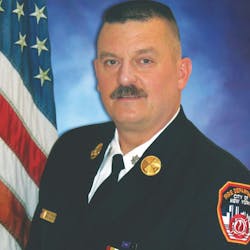One of the first tactical decisions that’s made at fire and emergency operations is where the arriving apparatus should be positioned. Apparatus positioning sounds rather technical and implies that there’s a correct location for the apparatus. However, the difficulty is that numerous issues and factors must be considered. Further, the issues and factors at a location might change compared with what they were when you arrived and positioned correctly during a previous incident.
First-due engine
Where your apparatus is positioned shouldn’t be affected by whether your company responds on first alarms with a specific group of other companies that are identified as the first-due engine, the second-due engine, etc., or responds with other companies and your assignment on arrival is dictated by the fact that you arrived first or second, etc.
Consider a one-story, peaked-roof, private dwelling on a large lot with fire issuing from a single window on the front of the house, and the closest hydrant is a substantial distance from the house. You arrive with the first engine, and no other fire apparatus are on scene. What factors must you consider before deciding on where to stop and begin operations?
- How much water are you carrying? If you roll up with 1,000 gallons of water on board, you might decide to stop right in front of the house and start a hoseline into the front door. If you have only 500 gallons of water, you might want to stop the pumper and leave room for a tanker shuttle operation.
- How far is the house from the street? If the house is set back more than 200 yards from the street, your first-arriving engine might need to drive up the driveway and set up closer to the house. Of course, the number of lengths of the attack hoselines on the apparatus must be considered.
- Is an exposure threatened as you arrive? If it is, you might decide to position the engine slightly beyond the front of the involved house, so the attack hoseline can be stretched and the exposure can be protected with a second hoseline or a master stream.
- If a first-due ladder company responds with you and will arrive after you go into operation, you must consider where that apparatus will be best positioned. That means that you must stop and think quickly. The most important element is that you don’t block out the truck. You might have enough hose to pull an additional length to reach the building, but the truck can’t stretch its ladders.
A second engine
Of course, other issues and factors can arise in conjunction with what’s noted above, but let’s move on to the second-arriving engine company.
Because no hydrants are nearby, the second engine might be tasked with establishing a water supply to the first engine. That can be accomplished by laying a supply line in or out at this fire. Again, considering the width of the street, the number of apparatus that are on scene and the distance from the hydrant to the fire, the second engine might lay a line in and connect it directly to the first engine. That apparatus then can be positioned for other operations or to set up to supply water from a second source. If the distance is great, the second engine might decide to lay a line to the distant hydrant and connect to it to supply both water and pressure to the first engine.
Myriad considerations
Obviously, what’s above covers the first two engines at one specific fire operation and the positioning options. Company officers and drivers of all fire apparatus must be familiar with the many variables and options for this important fireground decision.






